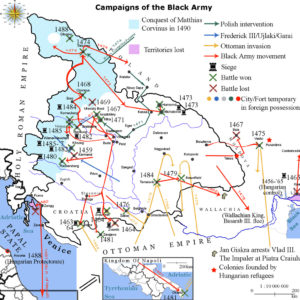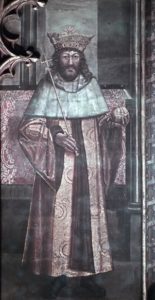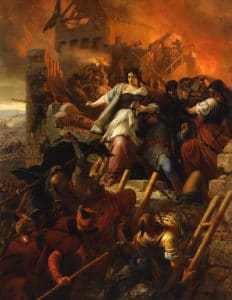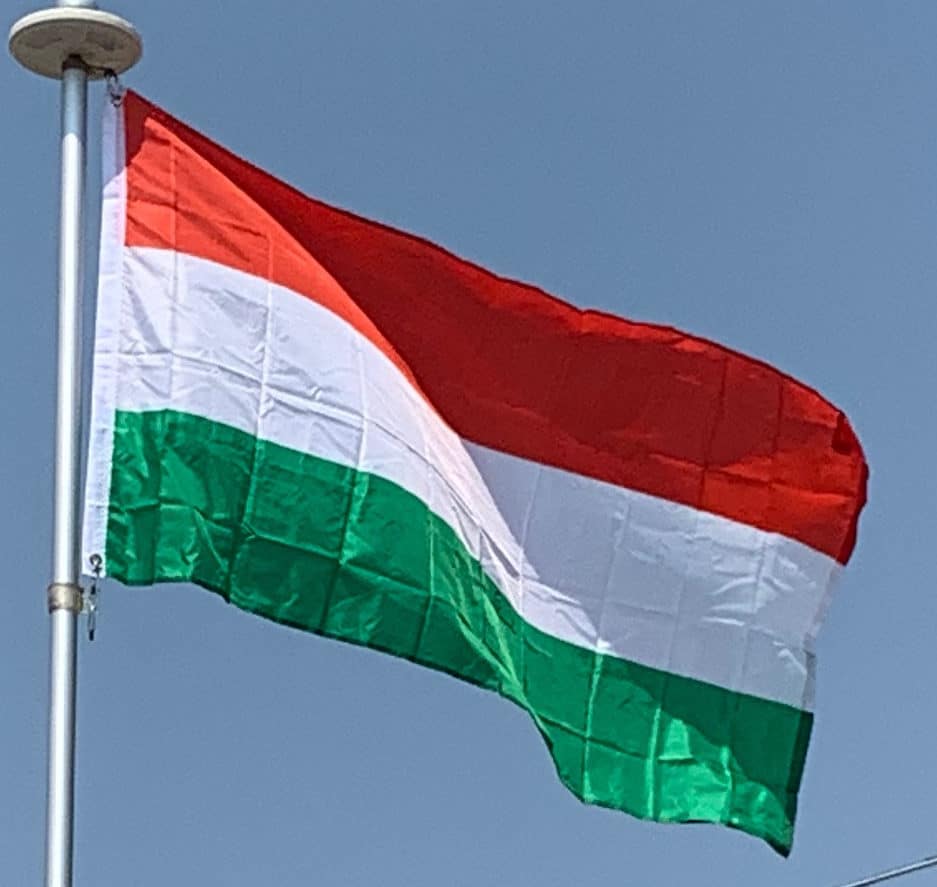The last strong king of medieval Hungary was the Renaissance king Matthias Corvinus (1458–1490), son of John Hunyadi. His election was the first time that a member of the nobility mounted to the Hungarian royal throne without dynastic background. He was a successful military leader and an enlightened patron of the arts and learning. His library, the Bibliotheca Corviniana, was Europe’s greatest collection of historical chronicles, philosophic and scientific works in the 15th century, and second only in size to the Vatican Library. Items from the Bibliotheca Corviniana were inscribed on UNESCO’s Memory of the World Register in 2005.

The serfs and common people considered him a just ruler because he protected them from excessive demands from and other abuses by the magnates. Under his rule, in 1479, the Hungarian army destroyed the Ottoman and Wallachian troops at the Battle of Breadfield. Abroad he defeated the Polish and German imperial armies of Frederick at Breslau (Wrocław). Matthias’ mercenary standing army, the Black Army of Hungary, was an unusually large army for its time, and it conquered parts of Austria, Vienna (1485) and parts of Bohemia.
Decline of Hungary (1490–1526):
King Matthias died without lawful sons, and the Hungarian magnates procured the accession of the Pole Vladislaus II (1490–1516), supposedly because of his weak influence on Hungarian aristocracy. Hungary’s international role declined, its political stability shaken, and social progress was deadlocked. In 1514, the weakened old King Vladislaus II faced a major peasant rebellion led by György Dózsa, which was ruthlessly crushed by the nobles, led by John Zápolya.

The resulting degradation of order paved the way for Ottoman pre-eminence. In 1521, the strongest Hungarian fortress in the South, Nándorfehérvár (today’s Belgrade, Serbia), fell to the Turks. The early appearance of Protestantism further worsened internal relations in the country.
Ottoman Wars 1526–1699:
After some 150 years of wars with the Hungarians and other states, the Ottomans gained a decisive victory over the Hungarian army at the Battle of Mohács in 1526, where King Louis II died while fleeing. Amid political chaos, the divided Hungarian nobility elected two kings simultaneously, John Zápolya and Ferdinand I of the Habsburg dynasty. With the conquest of Buda by the Turks in 1541, Hungary was divided into three parts and remained so until the end of the 17th century. The north-western part, termed as Royal Hungary, was annexed by the Habsburgs who ruled as Kings of Hungary. The eastern part of the kingdom became independent as the Principality of Transylvania, under Ottoman (and later Habsburg) suzerainty. The remaining central area, including the capital Buda, was known as the Pashalik of Buda.

The vast majority of the seventeen and nineteen thousand Ottoman soldiers in service in the Ottoman fortresses in the territory of Hungary were Orthodox and Muslim Balkan Slavs rather than ethnic Turkish people. Orthodox Southern Slavs were also acting as akinjis and other light troops intended for pillaging in the territory of present-day Hungary. In 1686, the Holy League’s army, containing over 74,000 men from various nations, reconquered Buda from the Turks.
